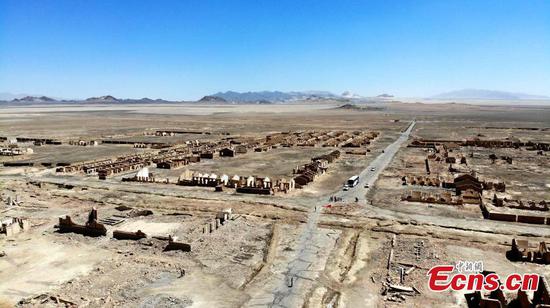Southwest China's Tibet autonomous region has witnessed sustainable development with its cultural relic preservation work over the past 60 years, according to the region's bureau of cultural relics on Monday.
Thanks to big support and efforts made by the State Bureau of Cultural Relics and the regional government, the region's cultural institute surged from one in 1959 to more than 70 currently, covering cultural management institutes, museums, exhibition halls, a cultural scientific institute and a cultural identification institute.
Based on official statistics released by the bureau, the region has 455 cultural relic workers, and Tibetan workers account for 85 percent of them.
The region has 4,277 registered and investigated cultural sites as well as 1,985 sites of all levels of cultural relic protection institutes. These include 55 national and 616 regional cultural relic protection institutes as well as 1,314 at the county level.
Liu Shizhong, the head of the bureau, said the region has been making big efforts in archaeology and the survey of cultural relics over the past 60 years, since 1959, by collecting micro blade cores in Tibet's Nagchu city through the Chinese Academy of Sciences, and it marked the start of China's archaeological excavation and cultural relic protection in the region.
"Between 1977 and 1979, the academy did archaeological surveys and excavations of the Kharub ruins in the region's eastern Chamdo city, and it filled in the gap for China's field archaeology in the region," said Liu.
Over the past six decades, more than 2,300 cultural relic sites were registered and surveyed all over places in the region. Thirty-six sites yielding cultural relics were discovered along the Qinghai-Tibet Railway, and more than 3,800 ancient relics were unearthed along the line.
"Relevant archaeological excavations have shown traces of human activity on the Qinghai-Tibet Plateau going back over 4,000 years ago. The region has carried out the first survey of immovable cultural relics, and it has completed the work in the region's 692 townships of all its 74 counties," said Liu.
China has invested heavily in the protection and renovation of cultural relics in Tibet. Between the 1980s and 2000, more than 300 million yuan ($42 million) was spent on some key cultural relics, such as renovation of the region's Potola Palace, Jokhang Temple, Tashi Lhunpo Monastery and the Guge Kingdom Ruins.
Between China's 11th Five-Year Plan (2006-2010) period and the 13th Five-Year Plan (2016-20), more than 3.4 billion yuan was allocated for the renovation of 155 cultural relic sites, including the Tibet Museum.
Starting from this year, China has planned to spend 300 million yuan over the next 10 years to preserve ancient documents and anthologies at Potala Palace.


















































